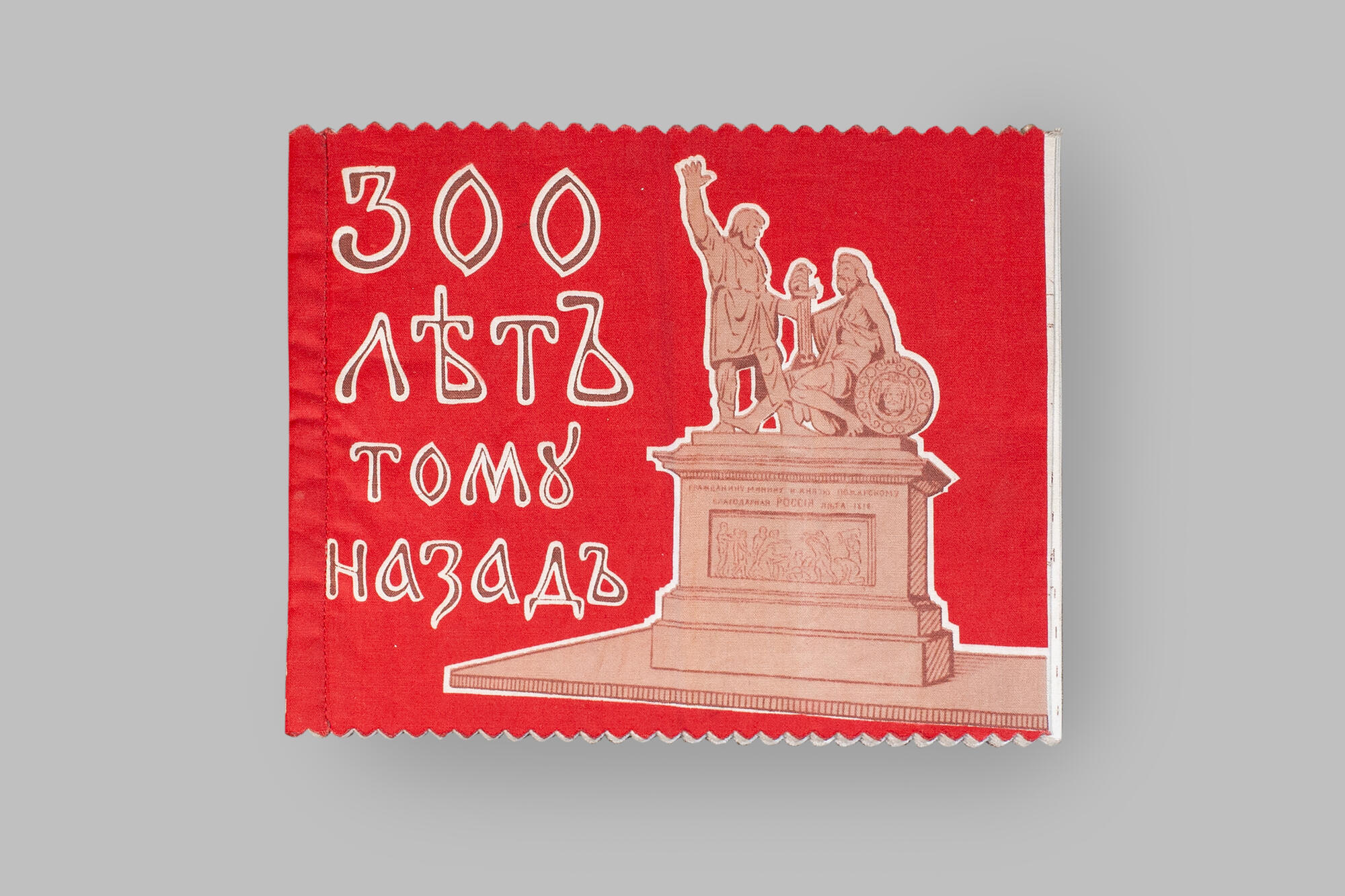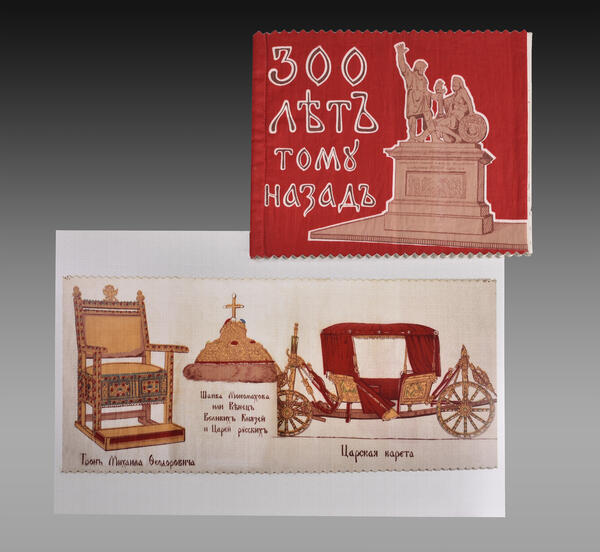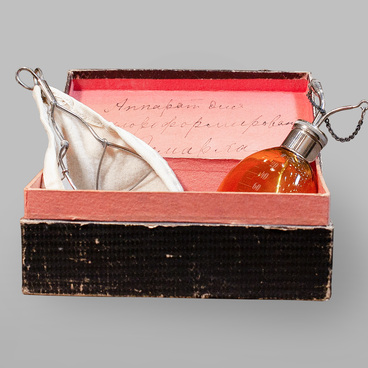In 1913, an important date was celebrated in the Russian Empire — the Tercentenary of the House of Romanov. Among the numerous souvenirs, catalogs, calendars, and portraits of the imperial family produced for the anniversary, textile albums were particularly popular.
The album features portraits of Mikhail Fyodorovich Romanov and his wife Eudoxia Lukyanovna Streshneva, as well as images of the symbols of monarchy, including the throne of Michael I, Monomakh’s Cap, a carriage, the coats of arms of Moscow and Kostroma, the house of the Romanov boyars, boyar costumes, and the gear of the tsar’s horse.
Mikhail Fyodorovich Romanov, or Michael I of Russia, (1596–1645) was elected tsar by the Zemsky Sobor on February 21, 1613. This marked the end of the Time of Troubles. The tsar’s parents were the boyars Feodor Nikitich Romanov, later known as Patriarch of Moscow Filaret, and Xenia Ivanovna Romanova (née Shestova). Mikhail was also a first cousin of Feodor I Ioannovich — son of Ivan the Terrible and the last Russian tsar from the Moscow branch of the House of Rurik. Among the participants of the Sobor were representatives of Khlynov (Vyatka).
On July 11, 1613, Michael I was crowned in the Assumption Cathedral of the Moscow Kremlin, which marked the founding of a new ruling dynasty of the Romanovs. After the coronation, the House of Romanov came to power and ruled Russia for over three centuries.
An album of this type is presented in the “House of Romanov and Vyatka” section of the “Characters and Events of Vyatka History” exhibition. The title of the album “300 Years Ago” is self-explanatory. It was produced by the Partnership of the Prokhorov Manufactory and depicted representatives of the House of Romanov and the symbols of monarchy.
The Partnership of the Prokhorov Manufactory was the oldest textile enterprise in Moscow, founded in the late 18th century. The forefather of the Prokhorov family, Vasily Ivanovich, was born into a family of a peasant from the Trinity Lavra of St. Sergius in 1755. He founded a factory with workshops, a paint laboratory, and a warehouse. After the death of Vasily Prokhorov, his son Timofey Vasilyevich continued his father’s legacy.
The album features portraits of Mikhail Fyodorovich Romanov and his wife Eudoxia Lukyanovna Streshneva, as well as images of the symbols of monarchy, including the throne of Michael I, Monomakh’s Cap, a carriage, the coats of arms of Moscow and Kostroma, the house of the Romanov boyars, boyar costumes, and the gear of the tsar’s horse.
Mikhail Fyodorovich Romanov, or Michael I of Russia, (1596–1645) was elected tsar by the Zemsky Sobor on February 21, 1613. This marked the end of the Time of Troubles. The tsar’s parents were the boyars Feodor Nikitich Romanov, later known as Patriarch of Moscow Filaret, and Xenia Ivanovna Romanova (née Shestova). Mikhail was also a first cousin of Feodor I Ioannovich — son of Ivan the Terrible and the last Russian tsar from the Moscow branch of the House of Rurik. Among the participants of the Sobor were representatives of Khlynov (Vyatka).
On July 11, 1613, Michael I was crowned in the Assumption Cathedral of the Moscow Kremlin, which marked the founding of a new ruling dynasty of the Romanovs. After the coronation, the House of Romanov came to power and ruled Russia for over three centuries.
An album of this type is presented in the “House of Romanov and Vyatka” section of the “Characters and Events of Vyatka History” exhibition. The title of the album “300 Years Ago” is self-explanatory. It was produced by the Partnership of the Prokhorov Manufactory and depicted representatives of the House of Romanov and the symbols of monarchy.
The Partnership of the Prokhorov Manufactory was the oldest textile enterprise in Moscow, founded in the late 18th century. The forefather of the Prokhorov family, Vasily Ivanovich, was born into a family of a peasant from the Trinity Lavra of St. Sergius in 1755. He founded a factory with workshops, a paint laboratory, and a warehouse. After the death of Vasily Prokhorov, his son Timofey Vasilyevich continued his father’s legacy.





